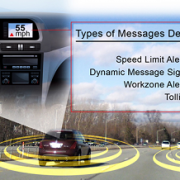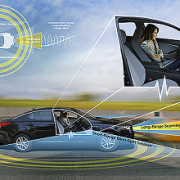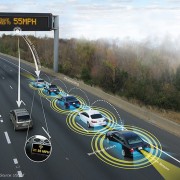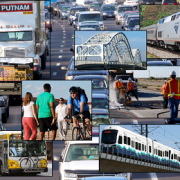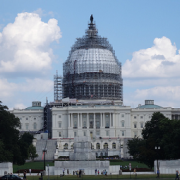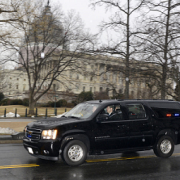eTrans Systems to Show Off Its Latest Connected and Autonomous Vehicle Tech at Auto Shows This Month
FAIRFAX, Va. — eTrans Systems announced today that it will be demonstrating its latest technology at both the Consumer Electronics Show in Las Vegas (January 5-8) and during the AutoMobili-D exhibit at the North American International Auto Show in Detroit (January 8-12). eTrans specializes in autonomous and connected vehicle solutions.
The technologies eTrans will be displaying include:
FLOS – Fleet Operating System (FLOS) is eTrans Systems’ solution for autonomous vehicle fleet management. The FLOS app allows customers to request a ride, monitor the progress of their trip and control what is happening in the vehicle. The FLOS Central Controller provides real-time fleet monitoring functions, robust fleet maintenance capabilities, analytics and optimization. The Central Controller provides interfaces to external systems and to the FLOS user app and FLOS Vehicle components. The FLOS Vehicle component provides the interface to the autonomous vehicle engine to enable it to send commands and receive status information. Additionally, the V2x Sensor functionality allows the vehicle to interact with DSRC-enabled vehicles and infrastructure to increase safety and mobility.
PnP RSU - eTrans’ Plug-n-Play (PnP) Roadside Unit (RSU) has the ability to transmit DSRC messages controlled from the cloud. These messages can be dynamically formed and new messages deployed without the installation of new software. In addition, the PnP RSU has the ability to receive and analyze incoming messages from vehicles that pass by. The eTrans PnP RSU supports all the latest 2016 IEEE and SAE standards. The messages it supports include BSM, SPaT, MAP and TIM. Additional message types can easily be added.
eTrans DSRC Parking Solution provides parking availability information using dedicated short-range communications (DSRC) to help enable both autonomous and driven vehicles to easily find open parking spots. In cities throughout the world, parking is a major issue. It has been estimated that upwards of 30 percent of urban drivers are at any one time looking for parking. This is a tremendous waste of both time and energy. The eTrans DSRC Parking Solution can help to eliminate this waste. Sensors in the parking lot detect the availability of spaces. When spots are available the sensors notify the DSRC Road Side Unit (RSU), which in turn broadcasts that availability. On-Board Units (OBUs) in the car receive the messages and then notify either the driver or the vehicle’s autonomous driving system.
Connected Vehicle Autonomous Sensor Solution
The eTrans Connected Vehicle Autonomous Sensor Solution allows autonomous driving systems to use V2x connected vehicle data as another sensor to optimize the driving of the vehicle. A Connected Vehicle V2x sensor complements the other autonomous sensors such as cameras and Lidar by providing functionality, such as:
- Non-line of site vehicle and pedestrian detection
- Info on braking vehicles before they can be seen
- Infrastructure data such as the time remaining until a traffic light will change
The connected vehicle data is transmitted to an On-Board Unit (OBU) in the vehicle using the Dedicated Short Range Communication (DSRC) protocol. Upon receipt, the eTrans solution then processes the data and publishes it through the Polysync middleware platform like any other sensor. This interface is designed such that the protocol can be used with a variety of autonomous vehicle systems and middleware solutions. The technology is built using Google’s Protobuf which is a language-neutral, platform-neutral, extensible mechanism for serializing structured data.
Connected Vehicle Applications and Platform
The eTrans Connected Vehicle Platform provides for Vehicle-to-Vehicle (V2V) and Vehicle-to-Infrastructure (V2I) safety and mobility applications.
These applications include:
- Forward Collision Warning
- Emergency Electronic Brake Lights
- Red Light Violation Warnings
- Over Speed Warnings
- Curve Speed Warnings
- Camera-Based Pedestrian Warnings
- Construction Zone Warnings
- Emergency Communications
These applications have been developed using the eTrans V2x Software Development Platform (VSDP) which provides a framework for the rapid development of Connected Vehicle applications and has been tested using eTrans’ V2x Comprehensive Analysis Platform (VCAP).
At CES, eTrans will be in the Renesas tent in the Gold Parking Lot. At AutoMobilli-D - eTrans will be in booth 32.
About eTrans Systems: eTrans Systems specializes in the development and deployment of autonomous and connected vehicle systems. eTrans’ solutions include safety applications, mobility applications and vehicle management applications. eTrans clients include automobile OEMs, tier-1 auto suppliers and state and local governments.
Save

